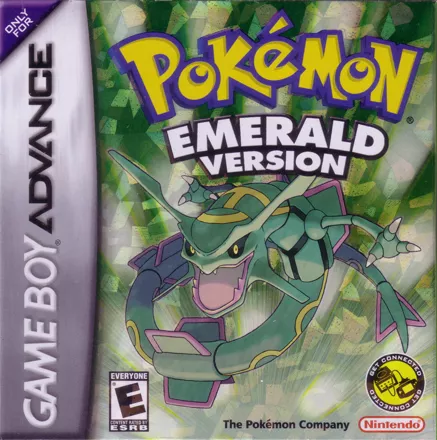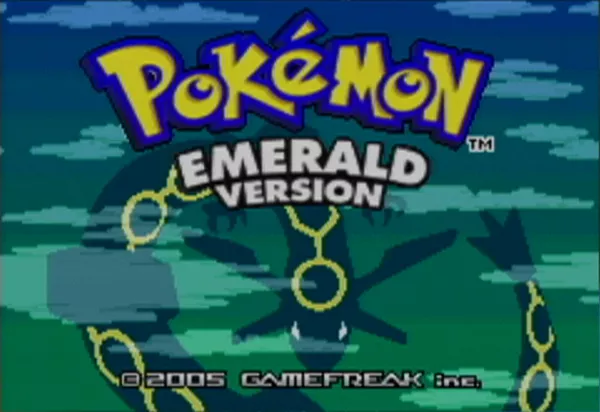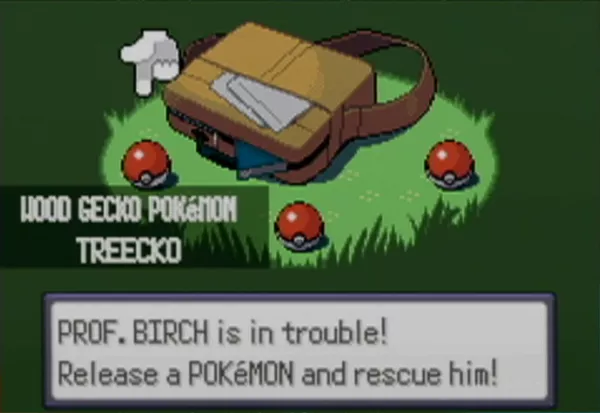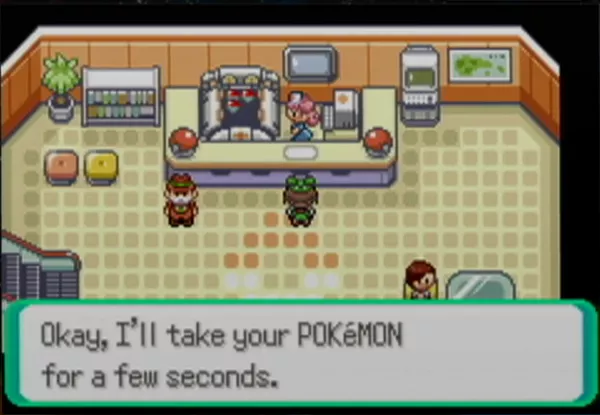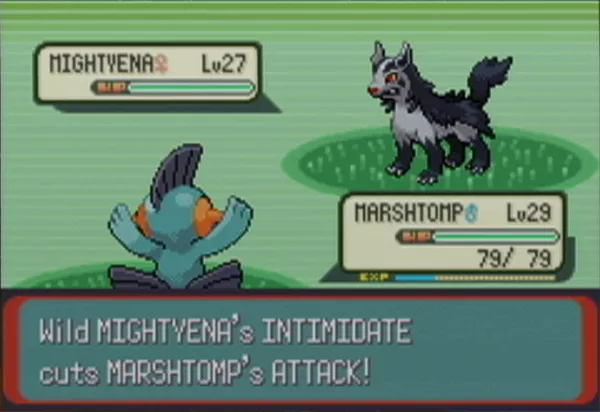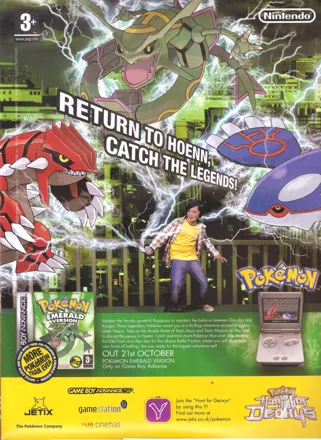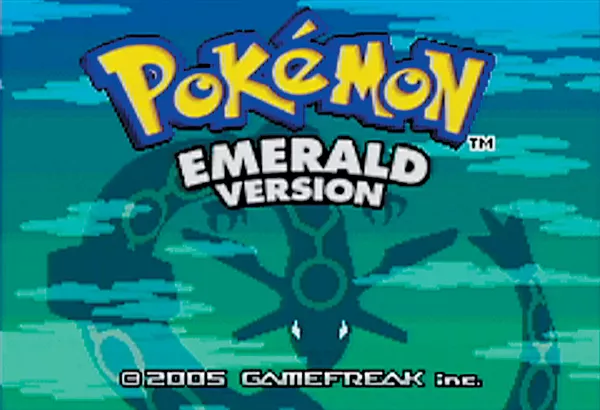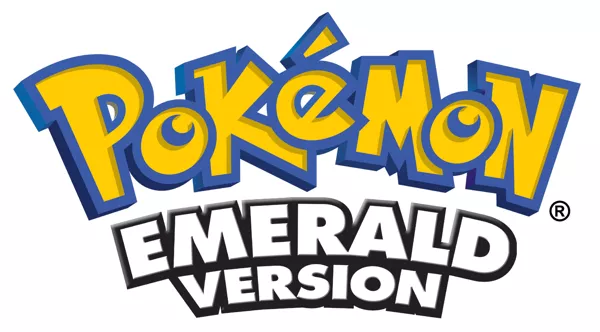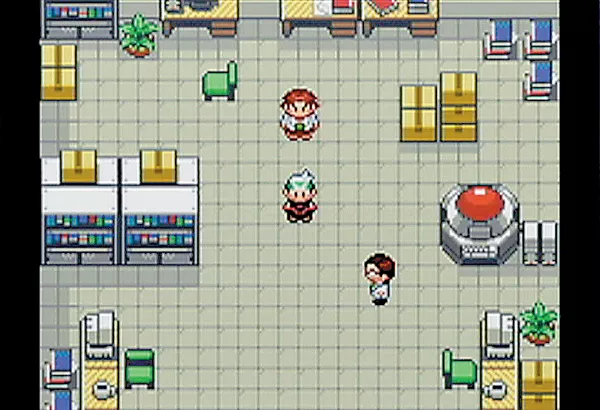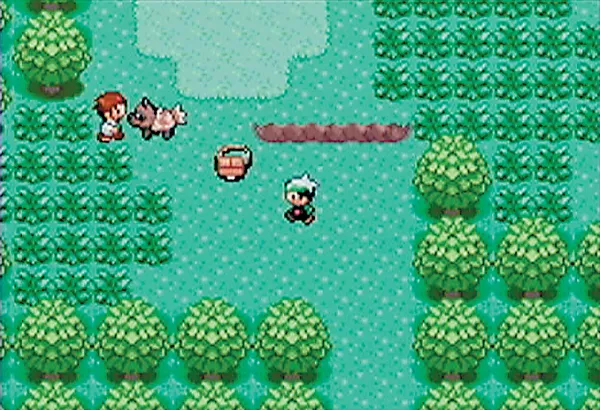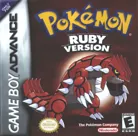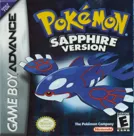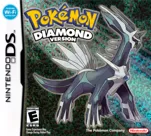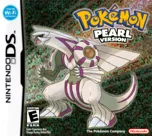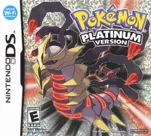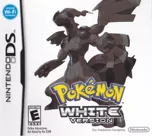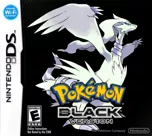Pokémon Emerald Version
Description official descriptions
Pokémon Emerald is the fifth Pokémon game of the advanced generation, after its predecessors Ruby, Sapphire, FireRed, and LeafGreen. It takes place in the world of Hoenn but can also connect with Kanto-based games FireRed and LeafGreen as well. Like Pikachu and Suicune were for Yellow and Crystal respectively, Rayquaza plays a vital role in this game along with the other Legendaries, Groudon and Kyogre. Though similar to the original storyline that occurs in Hoenn, Emerald offers more changes than Yellow and Crystal.
In terms of gameplay, there have been several alterations to the game:
Legendaries
- Ability to catch Rayquaza before the Elite Four, as well as both Groudon and Kyogre after it.
- Changes to catching the Regis.
- Ability to catch either one of Latios or Latias.
Graphics
- New outfits for the characters.
- New Pokémon animations.
Features
- Ability to enter the Safari Zone Extension, where you can catch Johto (the world of Pokémon Gold, Silver and Crystal) Pokémon like Houndour and Miltank.
- The Battle Frontier, an island full of different battle stadiums.
- Ability to get both of the Claw and Root fossils.
These are of the changes you might notice at first while playing Pokémon Emerald. However, there are lots of other improvements apart from the new storyline that separates this game from its predecessors.
Spellings
- ポケットモンスター エメラルド - Japanese spelling
Groups +
- Gameplay feature: Botany, farming, gardening
- Gameplay feature: Creature breeding / fusion
- Gameplay feature: Day / night cycle
- Gameplay feature: Fishing
- Gameplay feature: Gambling
- Gameplay feature: Importable characters
- Gameplay feature: Interior decorating
- Gameplay feature: Monster capture / training
- Gameplay feature: Recordable replays
- Games made into comics
- Games made into TV series
- Games released as complementary versions
- Pokémon main RPG series
- Pokémon universe
- Protagonist: Female (option)
Screenshots
Promos
Videos
See any errors or missing info for this game?
You can submit a correction, contribute trivia, add to a game group, add a related site or alternate title.
Credits (Game Boy Advance version)
100 People (84 developers, 16 thanks) · View all
| Director | |
| Art Director | |
| World Director | |
| Lead Programmer | |
| Lead Graphic Artist | |
| Programmers | |
| Graphic Designers | |
| [ full credits ] | |
Reviews
Critics
Average score: 76% (based on 25 ratings)
Players
Average score: 4.1 out of 5 (based on 54 ratings with 1 reviews)
What Yellow and Crystal were for previous games, now for Ruby and Sapphire.
The Good
Well, Ruby and Sapphire were brilliant games and this is a longer version of those games, so it's a great game. However, if you've played these games before you may not want to pay for this. If you did not, however I can easily recommend this game. For newbies: You are a trainer of Pokémon. Pokémon are creatures that can be caught with Pokéballs. This is one of the main quests. The other one is to become the best trainer by defeating the champion. First you need to defeat some local bosses, called Gym Leaders, If you collect the badges they award you, you can challenge the best trainers in the land to defeat them. After having done this all areas are accessible. A lot of Pokémon are caught. Others may be obtained by evolving less mature and developed races of Pokémon. Some need to be bred and there are also Pokémon that don't appear in your version and need to be traded from other versions. In Emerald it's none other. This brings a great multiplayer system that uses the link option of the Game Boy Advance perfectly. The characters (386 in all) are recorded in the Pokédex encyclopedia obtained early in the game. Pokémon come in many forms. They are divided in 17 different classes. This gives a rock, paper, scissors system that brings a lot of strategy in the game. A fire-type attack is dominant over a grass type pokémon but a fire type pokémon is weak against an aquatic attack, but aquatic pokémon are weak against grass attacks themselves. The user's type, its abilities and more factors also influence how weak or strong it is against certain attacks. Some types are even immune to others. The surrounding of you character can tell you what sort of Pokémon are found there. Grass and Bug Pokémon hide in forests, Rock Pokémon in mountains or caves and water species in water. Hoenn, the world in this game, is just as varied as its creatures because of this. If you played Ruby and Sapphire you will only find the side quests interesting. If not you will enjoy the main quest too. The replay is still important to the value since it's very hard to get your hands on all critters and there are also side quests. New in this version is the Battle Frontier. This park for trainers is full of battle challenges that even veterans who have played Pokémon for years will find difficult. Those players will recognize the Battle Tower, but most of it is new. A few similar buildings can be found before you gain access to the Frontier which are also new. Each of the seven Frontier challenges has it's own boss just as in the main quest. It also has some more Pokémon not seen in Ruby, Sapphire, Fire Red and Leaf Green but only on the Game Cube games or old games that cannot link with a Game Boy Advance game. The story is better because you need to challenge enemies from both Ruby and Sapphire. There are some new caves and some places are larger but that's it. Graphics are simple but clear and fun to look at. They do what they should and with a large game as this no superb graphics have to be expected. Sound gives some of the better tunes on Game Boy Advance. The gameplay explained above is very addictive, yet one of the easiest RPG's to pick up. Much more than you'd think if you look at the hype of Pokémon back in the late 90's and the cute graphics
The Bad
Besides the battle Frontier and some classic Game Boy Color Pokémon it simply doesn't add enough to the game to make it worth a buy for Ruby/Sapphire owners except the die-hard fans. The stupid noise the pokémon cry out has not developed at all since 1996, when the first Pokémon games were released.
The Bottom Line
As always, great sound, nice graphics, superb replay, just as brilliant multiplayer and just plain fun, highly addictive gameplay. But not much new things if you played Ruby or Sapphire. If you didn't play them, however, buy this version instead, It'll be worth it!
Game Boy Advance · by Rensch (203) · 2005
Trivia
RNG Abuse
Random events in video games are determined by a pseudo-random number generator, or RNG. Emerald's RNG is flawed in that the game generates the exact same sequence of numbers every play session, and generates a new number at a consistent rate of 60 times per second. Thus, players can use external programs to easily determine the precise moment to trigger a Pokémon encounter that will produce desired stats and other characteristics.
Awards
- GameSpy
- 2005 – GBA Multiplayer Game of the Year
Analytics
Related Sites +
-
Pokèmon Elite 2000
A Pokèmon fan site good at covering the latest news about coming and existing Pokèmon games. -
Pokémon Emerald
Official game web site by Nintendo of America. -
Psypokes
A comprehensive Pokémon site that pretty much covers everything there is to know about the games.
Identifiers +
Contribute
Are you familiar with this game? Help document and preserve this entry in video game history! If your contribution is approved, you will earn points and be credited as a contributor.
Contributors to this Entry
Game added by Lampbane.
Additional contributors: gamewarrior, Игги Друге, DarkDante, Yearman, Spag, LordRM, Patrick Bregger, Harmony♡.
Game added May 10, 2005. Last modified December 30, 2024.


